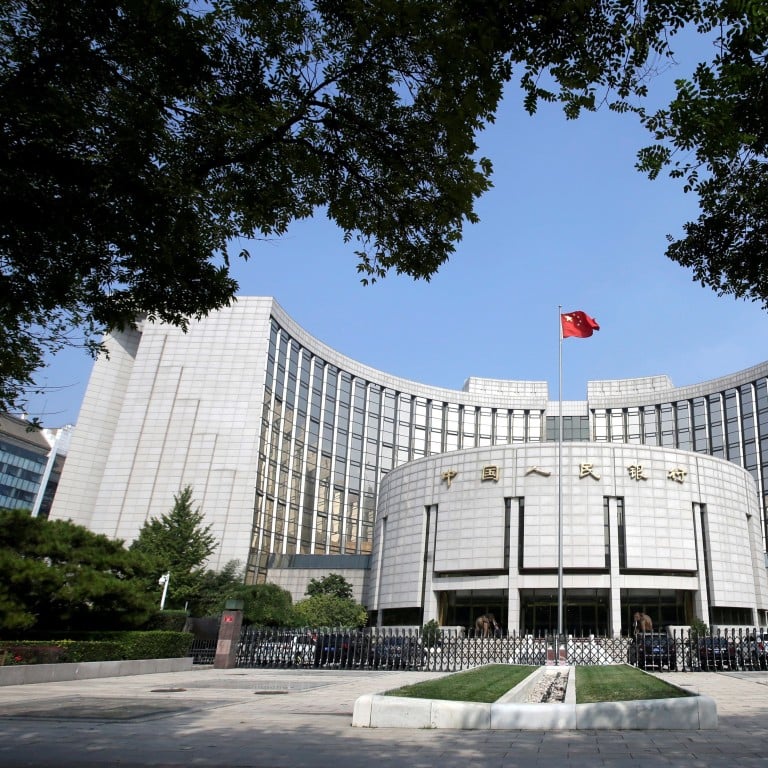
China’s financial system may be ‘less resilient’ than it appears, some banks may require recapitalisation: S&P
- People’s Bank of China has a ‘better handle’ on country’s financial risk, S&P Global Ratings says
- New regulations likely to be introduced to address vulnerability to governance, liquidity and contagion risks: S&P
China's financial system “may be less resilient” than it appears and some banks may require “sizeable recapitalisation” following an analysis of the central bank’s stress test of the country’s 30 biggest banks last year, according to S&P Global Ratings.
“Chinese banks are more vulnerable to idiosyncratic risks, arising from governance related issues and risk management deficiency, than systemic ones,” S&P credit analyst Ming Tan said in a research note. “Bank acceptance exposure and delayed financial reporting are among the key indicators of such risks. The quality of information and corporate action signals are important too.”
The People’s Bank of China gained a “better handle” on the financial risks and adopted more realistic assumptions in its 2019 stress test scenario, including bigger increases in bank funding costs, Tan said.
The stress tests found that five of the 30 banks tested would fail to meet a 5 per cent common equity tier ratio, an important measure of a bank’s financial health. Seven would fail to meet a 6 per cent threshold, it showed.
China takes over HengFeng Bank, in third nationalisation since May
High bank acceptance exposure relative to total assets is a useful risk indicator and could signal governance issues as the financial instrument is susceptible to misuse, such as a tool for regulatory arbitrage, Tan said.
Hengfeng’s bank acceptance-to-total assets ratio was 25 per cent in 2016, according to the S&P report. At Jinzhou, it was 15 per cent in 2017 and 26 per cent in 2018, but moderated slightly to 25 per cent in the first half of 2019.
Some banks may need a “sizeable recapitalisation” similar to bailouts received by Hengfeng and Jinzhou, S&P said. While the lenders that failed the PBOC’s stress test were not identified to prevent adverse market reaction, those who flunked the test would likely be required to shore up their capital, it added.
Bohai Bank, China Zheshang Bank and Shengjing are likely to come under more pressure than other stress-tested banks, according to S&P, given their significantly higher bank acceptance-to-total assets ratio.
China needs contingency plans for financial crisis: PBOC Advisor
“A complete system to manage financial risks during a slowdown has been formed, tested and matured as part of the financial clean-up,” analysts Richard Xu and Katherine Liu said in a note on January 10. “New procedures should keep tail risks from capital markets, capital flows, small banks, and nonbank financial services firms from spilling over.”
The clean-up has reduced capital market leverage and duration mismatches for on- and off-balance-sheet financial products, they said. It has also notably improved financial system transparency.
‘Everything’s OK’: China hits back at IMF verdict on health of banking system
S&P said China’s non-performing loans remain highly sensitive to GDP growth, even for sizeable banks. As a result, the financial system remains vulnerable to a slowdown in China’s economy, contagion and idiosyncratic risks, it added.
It expects the PBOC to introduce new regulations to address the system’s vulnerability to governance, liquidity and contagion risks.
State media reported this month that the central bank would establish a stress testing system for macroprudential management, assess systemically important banks, and introduce measures to supervise financial holding companies.
China’s GDP growth rate has been slowing against the backdrop of a trade war with the United States since the middle of 2018. Despite the “phase one” truce signed on January 15, many analysts have kept their forecasts for China’s growth at below 6 per cent this year.
The economy also is facing the additional challenge of a coronavirus which has spread to all 31 provinces in China and other countries. The outbreak has killed more than 200 people, mostly in mainland China, while the infection tally has surpassed those during the Sars (severe acute respiratory syndrome) epidemic in 2003.

